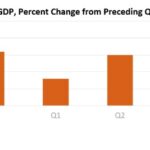By: David Etter, Managing Director- Loan Review Services
Most Bankers are very comfortable with the use of a Debt Service Coverage Ratio (“DSCR”) when evaluating a CRE transaction. Simple enough – is the cash flow as calculated sufficient to meet the required debt payments plus some margin of cushion? This ratio has been one of the staples of evaluating CRE credit risk.
So why do we advocate expanding beyond the simple DSC to analyze the repayment risk? One of the two variables in a DSCR calculation is the Annual Debt Requirement (“ADR”), or simply the contractual payment amount. There have been two economic/market trends that have had a material impact on the ADR’s, and resultant DSCR:
- Competitive market conditions have extended the amortization periods for many CRE loans. What used to be a 20 year amortization product has evolved due to competitive pressures into a 25 year, 30 year and even longer amortization.
- Current economic conditions have perpetuated a run of historically low interest rates.
These two factors combined work to lower the ADR, which improves a DSCR assuming consistent level of cash flow available. One needs to understand how changes to the two variables (amortization and interest rate) impact both the risk of the subject loan, and the change in risk of the loan relative to other loans in the portfolio. Debt Yield is a tool that lets you do both easily.Debt Yield is a measure of the leverage of the cash flow/Net Operating Income (“NOI”). Debt Yield is described in the Comptrollers Handbook – Real Estate Lending – page 40:
Debt yield is the ratio of NOI to debt. It is calculated by dividing the NOI by the loan amount (typically senior debt only) with the quotient expressed as a percent. Debt yield provides a measurement of risk that is independent of the interest rate, amortization period, and capitalization rate. Lower debt yields indicate higher leverage. This measure can be especially useful during periods of low interest and capitalization rates where loan amounts established by using the DSCR and LTV ratio may be prudent only as long as the low rate environment is sustained. Debt yields that reflect normalized or higher-rate levels can be used to establish stressed loan amounts that are less vulnerable to higher-rate environments. Debt yield also permits banks or examiners to utilize a common metric to quickly size a loan or assess its relative risk.
It’s an easy calculation to make. But what does the resultant percentage tell us? The Comptrollers Handbook states:
While appropriate debt yields vary according to market conditions and property types, 10 percent is generally considered a minimum acceptable yield with higher yields recommended for riskier properties.
Like most underwriting tools, Debt Yield works best when used in conjunction with other traditional measures such as DSCR and LTV, not as a single standalone tool.






